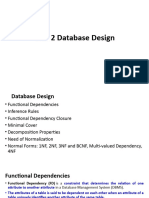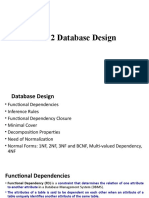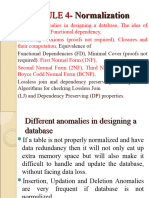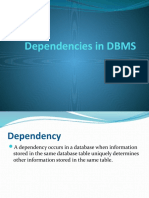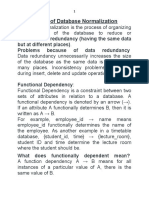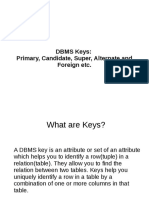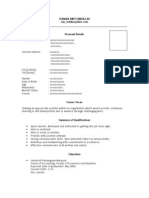0% found this document useful (0 votes)
12 views85 pagesNormalization
The document discusses fundamental concepts in database management, focusing on functional dependency and attribute closure, which are vital for maintaining data integrity and normalization. It explains how functional dependencies determine relationships between attributes and outlines various types of dependencies, including full, partial, transitive, and trivial dependencies. Additionally, it emphasizes the importance of normalization to eliminate data redundancy and anomalies in database operations.
Uploaded by
chitrammakersCopyright
© © All Rights Reserved
We take content rights seriously. If you suspect this is your content, claim it here.
Available Formats
Download as PPT, PDF, TXT or read online on Scribd
0% found this document useful (0 votes)
12 views85 pagesNormalization
The document discusses fundamental concepts in database management, focusing on functional dependency and attribute closure, which are vital for maintaining data integrity and normalization. It explains how functional dependencies determine relationships between attributes and outlines various types of dependencies, including full, partial, transitive, and trivial dependencies. Additionally, it emphasizes the importance of normalization to eliminate data redundancy and anomalies in database operations.
Uploaded by
chitrammakersCopyright
© © All Rights Reserved
We take content rights seriously. If you suspect this is your content, claim it here.
Available Formats
Download as PPT, PDF, TXT or read online on Scribd
/ 85

